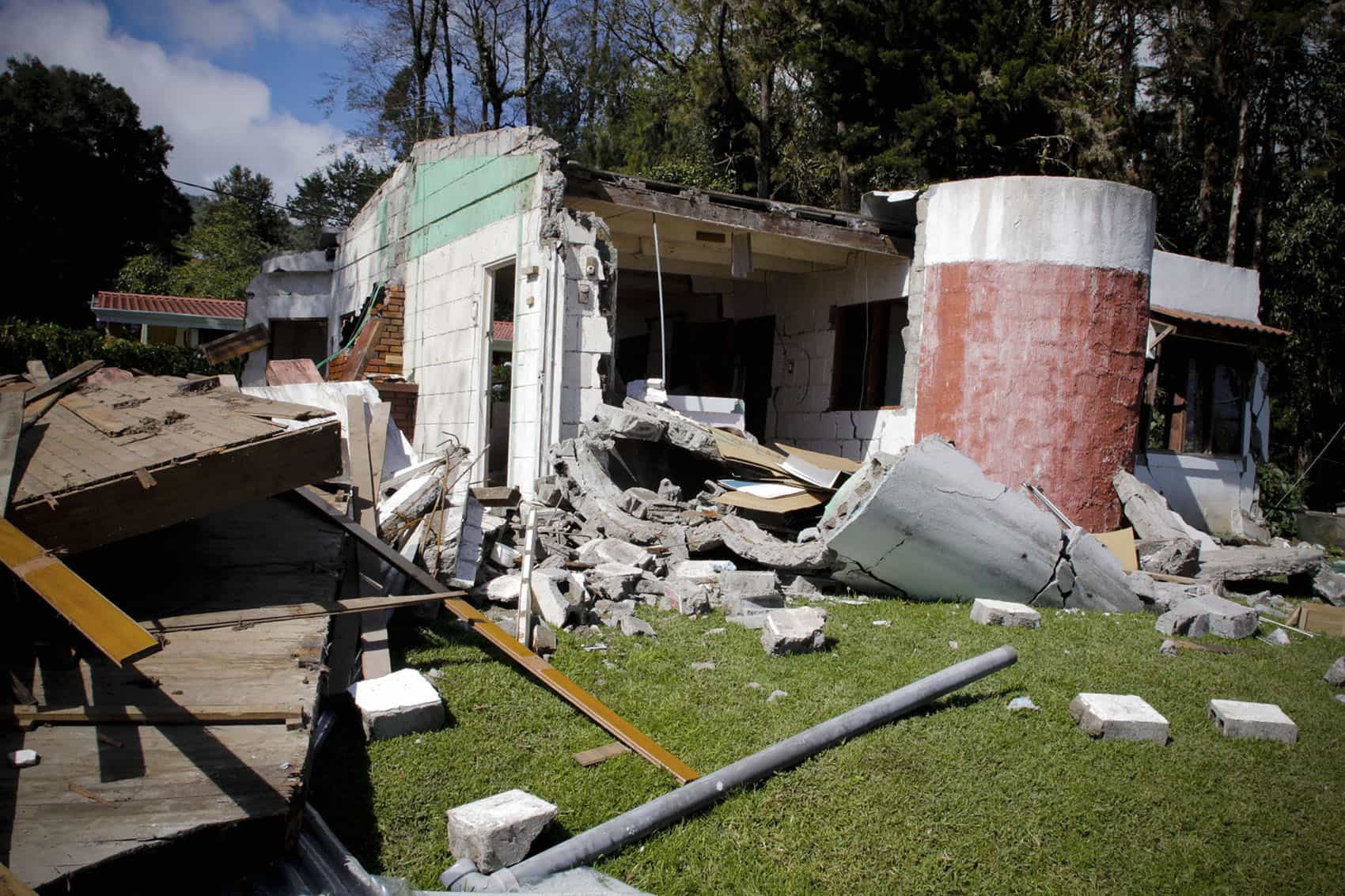Throughout Costa Rican history, numerous earthquakes have struck Costa Rica, some with devastating results.
The 6.2 magnitude temblor that overwhelmed a mountainous area northwest of San José on Jan. 8 ranks among the top three deadliest in the past century.
The worst in recorded history hit Costa Rica on May 4, 1910, when the erstwhile capital of Cartago was leveled for a third time. At least 700 people lost their lives.
The worst in recent memory occurred April 22, 1991, when a quake measuring magnitude 7.7, with an epicenter southeast of the Caribbean port city of Limón, killed 58 people in Costa Rica, 29 in Panama and left hundreds injured (TT, April 26, 1991).
More than 200 houses collapsed, and 150 communities in the Atlantic region were isolated. Eight major bridges were knocked out, and more than 1,070 aftershocks of at least 3.0 magnitude rattled the isthmus. A significant 4.8 magnitude quake followed two days later.
Speculation suggests there were more aftershocks after the Jan. 8 earthquake than after the 1991 quake, potentially even between 1,500 and 2,000 aftershocks.
Javier Pacheco from Volcanological and Seismological Observatory of Costa Rica (OVSICORI) said they aren’t giving any solid numbers because they haven’t yet differentiated between aftershocks and other small, natural earthquakes.
Ana Morales, who has lived in San José all her life, said that in 1991, “the earth rolled as though it were waves.
“I remember it so vividly, when the ferns in my front yard were literally swinging back and forth.”
During the 1991 quake, many residents and officials said, the biggest problem was the communication breakdown, but U.S. tourist Janet Weil from the earthquake prone U.S. city of San Francisco, who survived the 1989 earthquake there, praised the Tico response in 1991.
“The Costa Ricans were extremely wellprepared,” she said, adding that Ticos were also much calmer than her fellow citizens were in 1989 (TT, April 26, 1991).
Some earthquakes of similar magnitude to last Thursday’s have caused little or no damage.
On Nov. 20, 2004, a 6.2 quake, with an epicenter about nine kilometers northwest of the central Pacific town of Quepos, shook Costa Rica, killing eight. There were more than 100 aftershocks, four of which exceeded 4.0.
Several families lost their homes and were without electricity for half a day and without water for 24 hours.
The 2004 earthquake caused approximately $2.5 billion in damage, while the damage price tag put on the most recent quake so far has been pegged at $100 million, though more costs could be incorporated within the next few weeks.
Costa Rica’s Shaky Record
Situated near three major tectonic plates and possibly one microplate, Costa Rica is no stranger to earthquakes. These are the major seismic events:
1620: The old Costa Rican capital of Cartago is destroyed by a major earthquake.
Sept. 2, 1841: Cartago destroyed again by an earthquake. At least 700 people die.
May 4, 1910: Cartago heavily damaged by another quake.
April 26, 1916: A 7.3 magnitude quake with an epicenter in Valle de Estrella on the Caribbean coast is felt throughout the country.
Jan. 7, 1935: A strong quake causes heavy damage in the Atlantic port city of Limón.
Oct. 5, 1950: A strong earthquake hits the northern province of Guanacaste.
April 14, 1973: A 6.5 quake hits the northwestern town of Tilarán, killing 22.
April 2, 1983: A 7.1 quake off the tip of the Osa peninsula on the southern Pacific coast kills one and leaves 500 homeless.
July 3, 1983: A 6.3 magnitude earthquake 60 kilometers south of San José leaves two dead, 3,000 homeless and 13 injured.
March 1987: A 5.2 quake hits near the Sierpe
River, north of the OsaPeninsula.
March 1988: A 5.3 quake hits near the Terraba River, which flows out of the General Valley in the southern zone.
March 25, 1990: A 6.5 quake with an epicenter 19 kilometers southwest of Cobano on the NicoyaPeninsula damages buildings in San José, Puntarenas and Puriscal. Eight houses and three schools are destroyed; 34 houses and 24 schools are partially damaged.
Dec. 22, 1990: A 5.7 quake with an epicenter three kilometers north of Santiago de Puriscal injures 70 people and damages hundreds of houses in Puriscal, Alajuela and Atenas.
Feb. 16, 1991: A 4.6 quake hits Heredia and Alajuela, destroying 20 houses.
March 1, 1991: A 6.0 quake six kilometers north of San Rafael de Guatuso and 190 kilometers deep causes no major damage.
April 22, 1991: A quake measuring magnitude 7.7, with an epicenter south of the Caribbean port city of Limón, kills 58 people in Costa, 29 in Panama and leaves hundreds injured. A 4.8 quake follows two days later.
Nov. 20, 2004: A 6.2 quake, with an epicenter about nine kilometers northwest of the central Pacific town of Quepos, causes $2.5 billion in damage, killing eight.
Source: Tico Times archives, U.S. Geological Survey.







